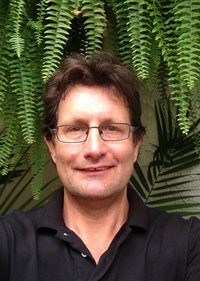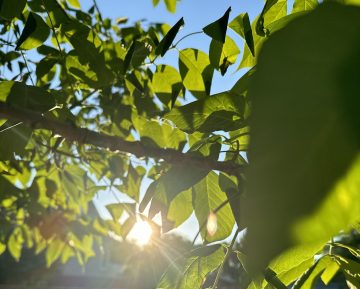
by Gord Grant PhD, RAc and Alina Tousseeva RAc


Instrument Assisted Soft Tissue mobilization (iaSTiM) is not a new idea at all!
Who has not used a solid object or tool to work out the tight knots in your back muscles? And think of all the self myofascial release instruments such as foam or ribbed plastic rollers, rubber balls and or other devices. iaSTiM is indeed an ancient practice. It has been performed by practitioners of oriental medicine for thousands of years. In our clinic, as with most traditionally trained acupuncturists, we use gua sha (or spoon therapy) and cupping (application of vacuum on the body with cups). In this article, we’ll focus on gua sha. Interestingly, there is very close relation of gua sha to the more contemporary chiropractic technique called Graston Bar therapy. Unlike gua sha though, Graston Bar is a trademarked practice and uses very expensive, specialized tools.
At ATP we are always discussing and challenging principles that guide our therapies. In a positive and constructive way, we promote questioning of the assumptions and/or evidence of any therapeutic technique, medical procedure, or medicine with each other and our clients.
Very little research has been done on any iaSTiM techniques to understand their mechanism, indications and limitations, or outcomes of their use. Although we have been classically trained in Chinese Medicine, we do have extensive science backgrounds and we think the therapeutic impact of techniques can be explained with a scientific rationale. We don’t have all the answers, but we do find our clients benefiting more when we thoughtfully integrate iaSTiM into their treatments. We are realizing iaSTiM has specific effectiveness and potential; we use it to complement, not replace, manual massage in our clinical practice.
The main and most obvious difference about iaSTiM is that a hard physical object can focus and direct more pressure compared to manual massage. Gua sha, Graston Bar, or any iaSTiM instruments for that matter, can be shaped and used in various ways apply forces with consistent and controlled intensity and customized to the various anatomical variations of a persons body.
Here are some specific concepts where instruments can be useful in mobilizing soft tissue more effectively than manual massage.
1. Breaking fibrous adhesions may be more specific and directed with hard instruments of various shapes. The unidirectional stroking of a hard object on lubricated skin will have impact on connective tissue depending on the force applied, the shape and orientation of the hard object, the number of repetitions, and the angle and direction of the forces applied to the connective tissue. Aside from breaking adhesions and promoting blood flow and renewal of tissues, we believe we are conditioning the tissue with similar adaptive processes that occur in any soft tissue challenged by a physical stress, as in strength or endurance training of muscles and sinews.
2. Enhancing blood flow (new blood), toxin flushing of metabolic wastes like lactic acid may also be more extensive than manual massage for the same reasons as with breaking fibrous adhesions. This could be from the perspective of simply impacting tissue more deeply. Also, if adhesions are being broken, then blood flow being reinstated by a greater local or regional mobility. Since ancient times, gua sha has been used primarily to break up “stagnation” by promoting the smooth flow of blood in the affected area to relieve pain. Medical research shows that the microcirculation in the affected area does significantly improve and stays that way for a longer period than for massage.
3. Local Release of Blood- local effects. We find this the most interesting therapeutic possibility of iaSTiM techniques, so we focus more on this one. It is common and even desired for any of these instrument assisted techniques to create transitory micro-bleeding or “petechiae” under the skin (called a “rash” misleadingly in gua sha, since it is not a skin irritation). The petechiae represent a breaking of fragile capillaries and the subsequent release of the blood into subcutaneous layers. This does not happen easily with healthy tissue – in fact, unless extreme force is used, we cannot get petechiae on healthy tissue. So this is fundamentally different from a normal trauma bruise, where tissue damage is more significant and accompanies both pain and the release of blood from both capillaries and larger vessels.
With light repetitious gua sha strokes on well lubricated skin, petechiae can form quickly on or near chronically hypertonic muscles or active trigger points. This bleeding occurs in more delicate tissue that we believe is degenerate and suboptimal. This is the result of a chronic lack of nutrients or oxygen or the accumulation of metabolic wastes like lactic acid in exhausted muscles. Optimally, muscles and associated connective tissue are designed to contract and relax, and this pumping action not only aids the blood returning through the venous system, but also supports the constant flow of fluids between cells. This healthy swamp-like drainage system from the capillaries to the lymphatic system is supposed to be in constant flow, but gets stagnant and unhealthy when muscle is chronically “tight”.
From an intuitive level, we see that we are initiating a primary healing response, causing the local tissue to regenerate and renew. The reason we know this is that when we challenge the same tissues in successive weeks to this technique, the petechiae response becomes less and less, or even absent, even though the tissues may still be tight or hyperactive.
4. Local Release of Blood- general effects. So here’s a very interesting part of the micro-bleeding story. Aside from local pain, gua sha has traditionally been used for asthma, bronchitis, colds, flu, fever, heatstroke, and general body pain like fibromyalgia. There is evidence that when blood is released with gua sha, there may be a basis for a more generalized effect. The body needs to deal with the “heme” from the hemaglobin in the red blood cells (this is a dangerous component to run around loose, as is iron). Heme Oxygenase-1 enzyme is produced and may have a protective anti-oxidant effect not only on local cells, but also generally in the body. In one case study of a patient with hepatitis, gua sha transiently reduced the inflammatory markers of liver injury. They proposed that the enhancement of Heme Oxygenase-1 enzyme may have been responsible for protecting the liver. Also, gua sha induces the synthesis of NO (nitric oxide) due to production of NO-synthetase enzyme. This may be enough to cause general therapeutic effects. NO causes vessels to dilate and lower blood pressure (think of the nitroglycerin tablets patients take under their tongue to make NO that reliefs angina heart pain), and initiates general skeletal muscle relaxation, and may protect the digestive tract too. NO also decreases pain perception, nerve irritation and inflammation. Interestingly, large amounts of nitrites stored in skin absorbed in our diet normally from plant dietary sources (not just as additives in sausages that keep them red!). These nitrates in the skin are the source of NO production for this enzyme system. So nitrates are natural and needed, and are converted to NO in the skin when exposed to UV light. So it seems sunlight exposure may be critical to BP regulation too, more than just for vitamin D production!
Yes there is some science and rationale that supports iaSTiM as a legitimate therapeutic technique. As with any therapeutic technique in medicine, traditional or modern, the actual practice of it is also an art, where the practitioner needs to go beyond the statistics and what the book says. Indeed, we still need to still pay attention to what is uniquely happening with our clients and adapt! One big insight we have had that departs from how others commonly use gua sha, Graston Bar, or cupping: we say “less is more”. We get an optimal response by just nudging the body into its healing response; not too much so we are not causing more damage. The huge and severe amounts of petichae that you see when you search the internet for pictures of these techniques may not necessary to get an adequate healing response. Again, remember that it is very difficult to get micro-bleeding petechiae effect in healthy tissue, even with firmer pressure. A few gentle swipes is usually enough to know what we are going to get right away, and we don’t continue the technique to its end point. We get the desired therapeutic benefit from something less, without the discomfort and other side effects of something more!
When combined with acupuncture, gua sha and other iaSTiM techniques like cupping are an amazing combination. On the one hand, acupuncture works by relaxing the hyperactive tissue to reduce the cause of the fragility in the first place, and on the other hand, iaSTIM promotes tissue revitalization and conditioning. New tissue + relaxed tissue = healthier tissue that can stay healthy!
References
The effect of gua sha treatment on the microcirculation of surface tissue: a pilot study in healthy subjects. A. Nielsen et al. EXPLORE September/October 2007, Vol. 3, No. 5
Guasha-induced hepatoprotection in chronic active hepatitis B: A case study. Suk-tak Chan et al. Clinica Chimica Acta 412 (2011) 1686–1688
Fibroblast responses to mechanical forces. M Eastwood, D A McGrouther, R A Brown. Proceedings of the Institution of Mechanical Engineers Part H Journal of Engineering in Medicine (Impact Factor: 1.42). 02/1998; 212(2):85-92. DOI:10.1243/0954411981533854
The heme oxygenase system: its role in liver inflammation. Wunder C, Potter RF. Curr Drug Targets Cardiovasc Haematol Disord. 2003 Sep;3(3):199-208.
Gua sha, 2nd Edition. A Traditional Technique for Modern Practice, A. Nielsen, Churchill Livingstone, 2012
Extracellular matrix fibronectin mechanically couples skeletal muscle contraction with local vasodilation By: Hocking, Denise C.; Titus, Patricia A.; Sumagin, Ronen; et al.
Circulation Research. Volume: 102 Issue: 3 Pages: 372-379 Published: FEB 15 2008




